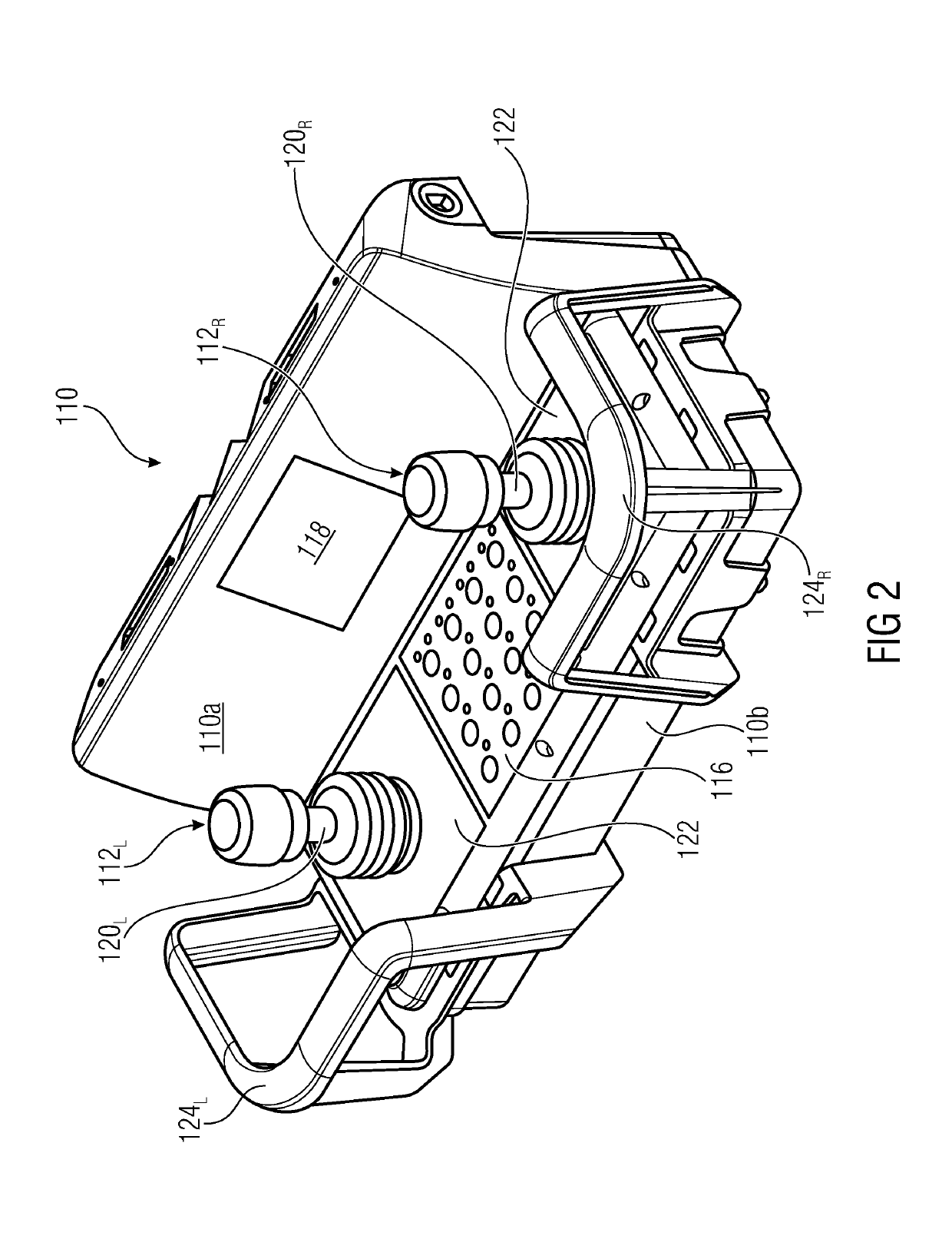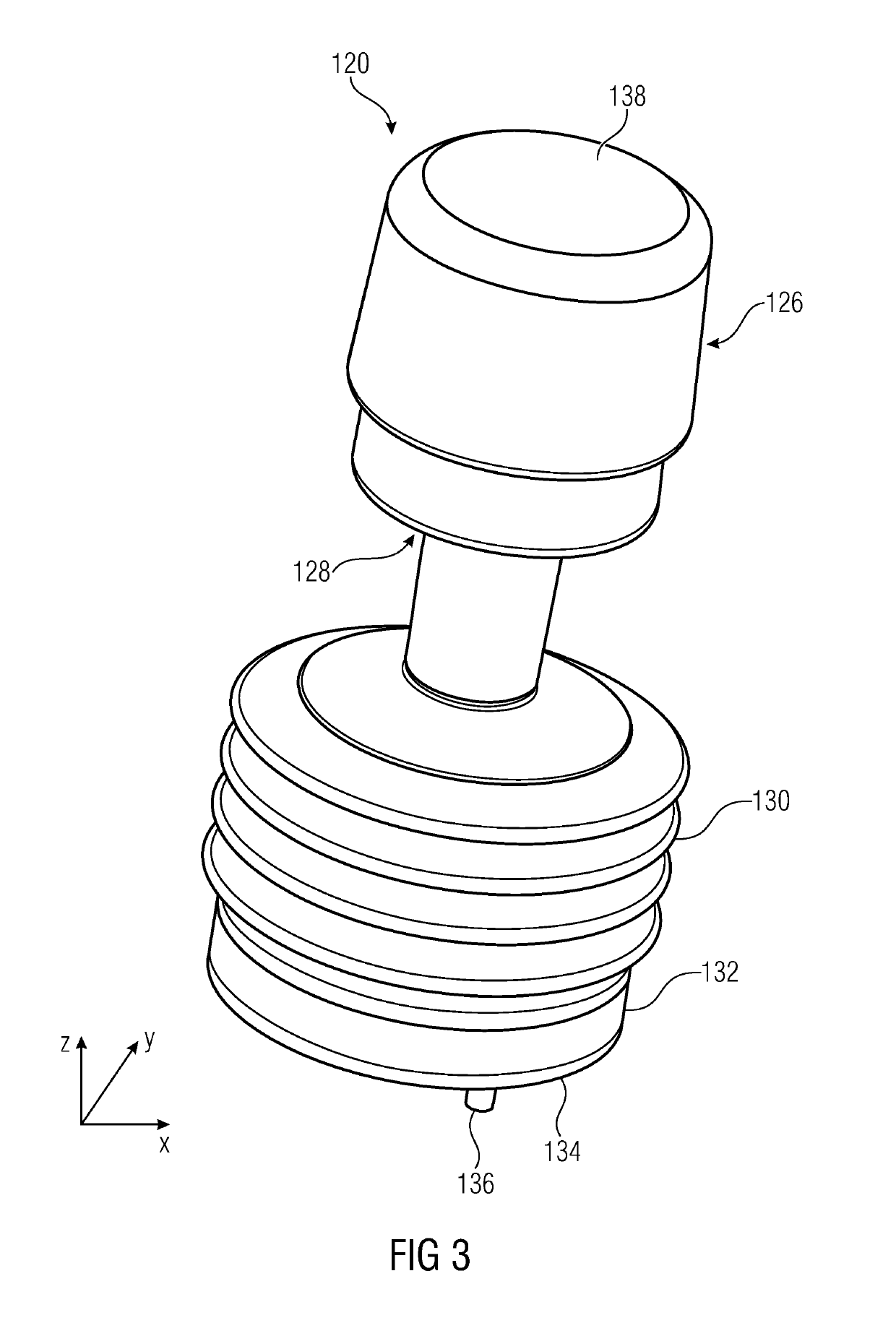Manual control device, control and operating unit including a manual control device, and work machine or construction machine
a technology of manual control device and control and operating unit, which is applied in the direction of mechanical control device, controlling member, limiting/preventing/returning movement of parts, etc., can solve the problems of reducing the lifetime of the actuating unit or the requirement, complicated setup and the exposure of the manual control device to the most adverse environmental conditions
- Summary
- Abstract
- Description
- Claims
- Application Information
AI Technical Summary
Benefits of technology
Problems solved by technology
Method used
Image
Examples
Embodiment Construction
[0064]Embodiments of the present invention will be detailed below referring to the appended drawings, wherein same elements or elements of same effect are provided with same reference numerals in the appended drawings.
[0065]FIG. 1 shows the illustration of a work machine or construction machine which comprises a control and operating unit comprising the inventive manual control device. FIG. 1 shows a lifting work platform 100 including a movable chassis 102 and as assembly 104 rotatably arranged on the chassis 102 which, apart from the necessitated motors for moving the lifting work platform 100, comprises a crane mechanism 106 at the front end of which an operating platform, such as, for example, a work cage, is arranged. The work cage 108 comprises a control and operating unit 110 which in turn comprises a first casing part 110a which is basically oriented vertically, and a second casing part 110b. The control unit 110 additionally comprises a manual control device 112 which will ...
PUM
 Login to View More
Login to View More Abstract
Description
Claims
Application Information
 Login to View More
Login to View More - R&D
- Intellectual Property
- Life Sciences
- Materials
- Tech Scout
- Unparalleled Data Quality
- Higher Quality Content
- 60% Fewer Hallucinations
Browse by: Latest US Patents, China's latest patents, Technical Efficacy Thesaurus, Application Domain, Technology Topic, Popular Technical Reports.
© 2025 PatSnap. All rights reserved.Legal|Privacy policy|Modern Slavery Act Transparency Statement|Sitemap|About US| Contact US: help@patsnap.com



